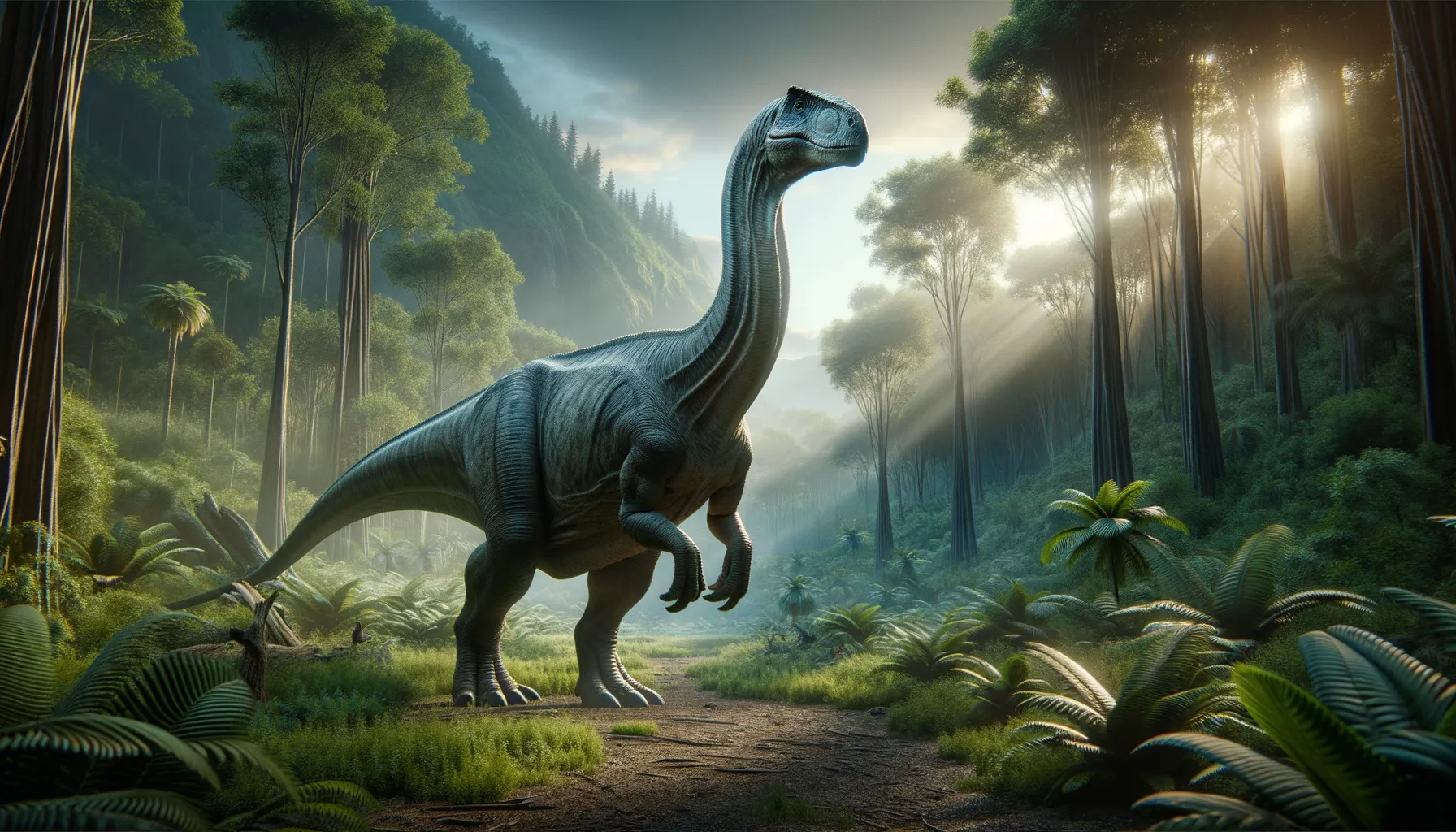
Antetonitrus
An ancient step towards giant sauropods.
Period
Jurassic
Length
Estimated to be about 10 meters long.
Height
Approximately 3 meters tall at the shoulder.
Weight
Estimated to weigh around 1.5 tons.
Antetonitrus was an early dinosaur that walked the Earth during the late Jurassic period. This creature is one of the earliest known sauropods, a group of long-necked, plant-eating dinosaurs. Antetonitrus is significant because it offers a glimpse into the transition from smaller, two-legged dinosaurs to the massive, four-legged giants. Its fossils provide valuable insights into the evolution and adaptation of sauropods to their environment.
Diet
Antetonitrus was a herbivore, primarily feeding on plants. Its diet consisted of foliage and vegetation available in its habitat.
Hunting
Being a herbivore, Antetonitrus did not hunt other animals. Instead, it likely spent much of its time foraging for food.
Environmental challenges
Antetonitrus faced challenges such as finding enough food in its environment. It had to compete with other herbivores for the same resources. Climate changes during its time could have affected the availability of food sources. Its large size may have hindered its ability to escape predators quickly.
Speed
Relatively slow-moving due to its large size.
Lifespan
Likely around 70 to 80 years.
First discovery
Discovered in South Africa in the early 2000s.
Fun Facts
- Antetonitrus is one of the earliest known sauropods, the group of long-necked dinosaurs that includes giants like Brachiosaurus.
- The name 'Antetonitrus' means 'before the thunder', hinting at its existence before its massive sauropod relatives.
- Antetonitrus lived during the Late Triassic period, around 210 million years ago.
- It was discovered in South Africa, providing important clues about early dinosaur evolution in that region.
- Unlike its later sauropod cousins, Antetonitrus had shorter necks and could rear up on its hind legs.
- Despite its size, Antetonitrus was likely a vegetarian, helping us understand the diet transitions of early dinosaurs.
- The partial skeleton of this dinosaur was first described in 2003, making it a relatively recent addition to paleontology.
Growth and Development
Antetonitrus underwent significant growth phases, starting from small hatchlings. As it matured, it developed its distinct long neck and body size. Its growth rate may have been slower compared to other dinosaurs. Environmental factors likely influenced its overall development and survival.
Habitat
Antetonitrus lived in what is now South Africa, which during the Jurassic period was a lush, forested area. The environment provided abundant vegetation for its diet. It likely inhabited regions with access to water and diverse plant life. Its habitat supported a variety of other dinosaur species as well.
Interaction with other species
Antetonitrus coexisted with other dinosaur species, both herbivores, and predators. It may have traveled in groups for protection against predators. Interactions with other species likely involved competing for resources. It could have used its large size to deter smaller predators.
Natural lifespan
Antetonitrus likely lived for several decades, possibly up to 80 years.
Reproduction
Antetonitrus reproduced by laying eggs, similar to other sauropods. It likely engaged in seasonal breeding based on environmental conditions. Parental care of the eggs or hatchlings is uncertain. Eggs may have been buried or hidden for protection from predators.
Social behaviour
Antetonitrus may have exhibited herd behavior for communal protection. Social interactions could have involved vocalizations and physical displays. Herd life would have helped in locating food sources as a group. The social structure, like other sauropods, remains mostly speculative.
Fossil locations
Fossils of Antetonitrus have been found in South Africa. These discoveries are crucial for understanding sauropod evolution. Additional fossils could be located in nearby regions with similar geology. Its fossils offer insights into the habitat and era it lived in.
